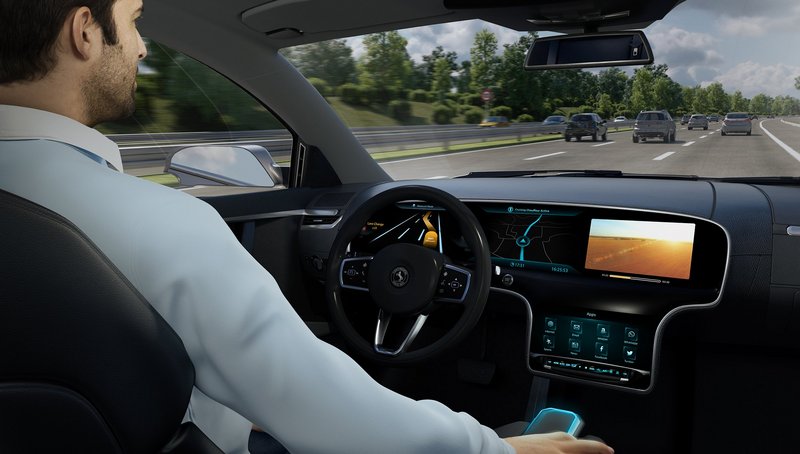A Command Center at Your Fingertips: Continental Develops Control Element for Automated Driving
- Success of automated driving requires trust and acceptance among users
- Central input device for maneuver control in the center console as an element of the holistic human-machine dialogue
- Input element increases the mode awareness when moving from manual to automated driving mode
Babenhausen, October 11, 2017. It only seems to be a matter of time until vehicles are fully automated or can even drive autonomously. On the way towards automated vehicles, the role of car drivers changes step by step. To further advance the development of automated driving, technology company Continental has developed a central input device. The Smart Control input device transparently and intuitively configures the change of role from driver to user of automated driving functions. It informs vehicle occupants if automated driving or manual driving is possible and can also be used to control driving maneuvers. “The success of automated vehicles depends on the user’s trust and acceptance. We achieve this with a holistic human-machine interface, which transparently informs users with intuitive interaction concepts and which enables them to control driving maneuvers. With Smart Control, we have developed a new element for the dialogue between user and vehicle,” says Dr. Frank Rabe, head of the Instrumentation & Driver HMI business unit at Continental.
Cooperative automation
To ensure the safe division of tasks between driver and vehicle in the conditionally and highly automated driving phases (SAE level 3 and 4), the new input device from Continental performs several key tasks. As an element in the center console of the vehicle, it continuously informs vehicle occupants of the current driving mode using a kinematics function. During manual driving phases, it disappears into the center console so the driver can only use the touchpad on top, to control the infotainment, for example. As soon as the vehicle is on a section of road where automated driving can be engaged, the device comes out of the center console and the driver can activate automation. The device can be operated in a similar way to a joystick supported by variable haptic feedback.
By additional color coding, Smart Control provides clarification on the current status of automation. Depending on the driving mode, the input device, together with other elements in the cockpit such as the fully digital instrument cluster, lights up in a specific color. This new development from Continental also significantly contributes to keeping the user’s attention at an optimal level, even during automated driving. This is particularly important in ensuring the safety of the sensitive takeover phase at the end of a period of automated driving. “We call this cooperative automation. The vehicle performs simple driving tasks, such as keeping to the correct lane, completely independently, while the driver gives instructions for complex driving tasks, such as overtaking on the freeway, which the vehicle then performs automatically,” explains Dr. Rabe. This means that the driver is always involved in the control loop of the driving task.
Moreover, the driver can use the input device to switch between different information displays on the digital instrument cluster – from maximum surroundings visualization, which displays all road users in the immediate vicinity, to a drastically reduced view that shows only the sections of road ahead. This function goes a long way to help build up trust in automated driving, by providing the right amount of information transparently and at all times.
High-quality, ergonomic design
When designing the central input element, Continental carried out an ergonomics test to identify the right form and appropriate materials for an ergonomic and high-quality design. Currently, the design’s main focus is on functionality and it can be individually modified for specific manufacturers. As well as haptic feedback to confirm driver instructions, the developers also integrated a function that prevents unintentional operation by recognizing whether the driver actually pressed something or simply touched the device accidentally.
The central input element for automated driving is currently being trialed in Continental test vehicles and the driving simulator to further test the concept of cooperative automation and optimize the specification of the device according to user acceptance.

Sebastian Fillenberg
Head of External Communications
Continental Automotive

